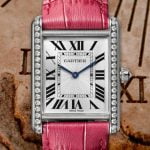
Tanya George
The historic buildings that dot the art precinct of Kala Ghoda have many stories to tell — of the era they were built in, their architects and inter-generational residents. An oft-ignored window into this treasure trove is the building signage that is usually as old as the structure itself. More than merely a collection of letters, the signage is a reflection of the cultural, linguistic and design decisions that went into making it, and also the people it catered to.
This Saturday, the Type Walk and Design Workshop organised by ARTISANS’ will explore Kala Ghoda through a typographic lens, where design professional Neha Bahuguna and typographer Tanya George will take participants on an exploratory walk.

Neha Bahuguna
“I love discovering cities on foot. It was after completing my masters in typeface design, where I delved into the history of typography, that I began to see Kala Ghoda in a new light,” says George. She shares interesting facts about some of the buildings that will feature in the walk. “There is an Armenian church in the area, which, when there were no Armenians left in Mumbai, was leased out to a Syrian Orthodox church. While the poster and marble inscription inside the church are in Armenian, the signage outside is in English,” she adds.

A laundry in Kala Ghoda with 3D lettering that is not easy to come by in today’s signage-making practices
To convert the experience into something tangible, Bahuguna will conduct a design workshop at the end of the walk, where participants will learn about the significance of font and lettering. “A lot of effort goes into ensuring that a font is easy on the eyes. It is this simplicity, achieved painstakingly, that we hope people can appreciate,” Bahuguna sums up.
[“Source-mid-day”]










